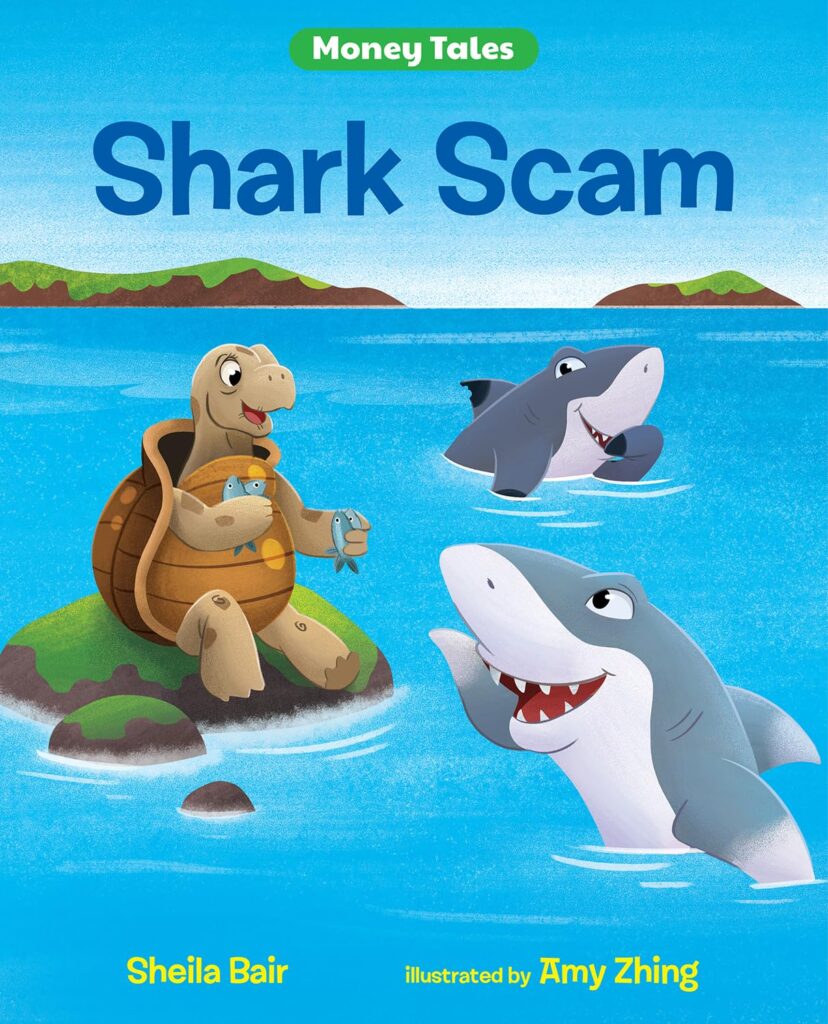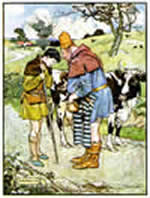
Content Partner
Grades 3-5

Don't have an account yet? Sign up for free
Don't have an account yet? Sign up for free


After listening to a computer-read story, "Jack and the Beanstalk," the students will find out that beans were used as an exchange for Jack’s cow. Jack traded his pet cow for an old man’s magic beans. Were they both happy? They should be! People exchange goods because both feel they will be better off after the exchange.

Do you have a pet? Would you trade something for your pet? If someone gave you money for your pet, would you trade your pet for money? Would you trade your pet for food if you were hungry? Would you trade your pet for five beans? In the story we'll hear in our lesson, that is just what happens!
An exchange involves trading goods and services for other goods and services or for money. Barter, however, does not involve the use of money. Barter is the direct trading of goods and services for other goods and services. Voluntary exchange occurs when all participating parties expect to gain.
Students: If you want a new pair of shoes, how do you go about getting them? You have to EXCHANGE something for the shoes. Exchange means to trade something for something else. What would you trade the store clerk for the pair of shoes? [Money.] Would you give the clerk money for the shoes? [Yes.] Could you trade a hamburger for a pair of shoes? [No.]
If you wanted a pair of shoes that your sister or brother had, could you trade something with your sister or brother for the shoes? [Yes.] Can you think of something your sister or brother might want–other than money– that you could trade for the shoes? Trading of this sort is called BARTERING. BARTERING is trading without money.
When you make a trade, both people should be satisfied after the trade. Why? [You should not have traded if you did not expect to be satisfied about it.]
Read the story Jack and the Beanstalk. For a PDF file of the story, click here. Be sure to emphasis the part where Jack trades his pet cow for beans.
Was the old man satisfied he got the cow? [Yes.] Was Jack satisfied that he got the magic beans? [Yes.] When you trade you should both be satisfied. Was Jack's mom satisfied? [No.] What did she want Jack to get in trade for the cow? [Money.]
But Jack and the old man traded the cow and beans. The old man bartered the beans for the cow.
Do you think Jack's mom was satisfied about the exchange of the cow for beans at the end of the story? [Yes.] Do you think Jack got Milky White back from the old man? [Answers may vary.]
What trade would make you satisfied? Fold a piece of paper in half. On one side of the paper draw a toy that you have that you would be willing to trade. On the other side of the paper draw something that you would like to trade for.
When you exchange one thing for another, the trade should make both people satisfied. You should not trade for something you do not want. When you trade and you don’t use money, it is called barter.
Have students bring a small item from home or provide them with items such as stickers, pencils, and candy. Give them a set amount of time to trade their items with one another. When ‘trading time’ is over, have students discuss their trades with the rest of the class.
Have students use The Trading Game to practice trading with others.
 The Trading Game is an interactive activity in which students will be assigned an item and then be given the opportunity to trade for other goods with other people. They will be asked if they would like to trade their item for the other goods. They can decline to trade or they can "trade" their item for another object. After the trades have occurred, the students will be asked if they are satisfied with their trades; they will be told that, if they are not satisfied, they should not have made the trade in question. The students also will be asked whether their exchange was an example of barter or whether they used money in the trade.
The Trading Game is an interactive activity in which students will be assigned an item and then be given the opportunity to trade for other goods with other people. They will be asked if they would like to trade their item for the other goods. They can decline to trade or they can "trade" their item for another object. After the trades have occurred, the students will be asked if they are satisfied with their trades; they will be told that, if they are not satisfied, they should not have made the trade in question. The students also will be asked whether their exchange was an example of barter or whether they used money in the trade.
This activity loops continuously. If students are sharing computers, give each child an opportunity to go through two to three cycles of the Trading Game before letting another student take their turn.
Note: Children tend to want to make a trade just to be trading something. Many times, after the fact, they are very upset that they traded. The lesson here is that both parties to a trade should benefit from the trade. If they don't expect to benefit, then they should not make the trade.
The objects that are assigned to the student are generated randomly, so students can play the game several times to reinforce the concepts in the lesson.

Content Partner
Grades 3-5

Content Partner
Grades 6-8, 9-12

Grades 6-8, 9-12

Grades 9-12
